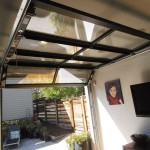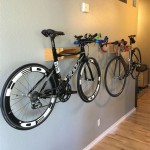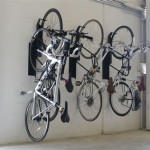How Much Do Storage Garages Cost?
Determining the cost of a storage garage involves several factors, making it difficult to provide a single, universally applicable price. The expense can fluctuate drastically depending on location, size, features, security measures, and the rental company providing the service. Understanding these variables is crucial for anyone looking to rent a storage garage and budget accordingly.
The prices quoted for storage garages typically represent monthly rental fees. These fees cover the use of the assigned space, but they may not include additional expenses such as insurance, administrative fees, or late payment penalties. Prospective renters must carefully review the terms and conditions outlined in the rental agreement to fully understand their financial obligations.
Different types of storage garages exist, each offering varying levels of accessibility, security, and climate control. Traditional self-storage units, accessible through roll-up doors and located in multi-unit facilities, are generally the most common and affordable option. However, premium storage solutions, such as climate-controlled units or those offering enhanced security features, will invariably command higher prices.
Geographic location significantly impacts storage garage costs. Urban areas with high population density and limited space availability tend to have higher rental rates compared to rural areas with lower demand. Areas with a higher cost of living will usually see correlated increases in storage garage prices.
Key Point 1: Factors Influencing Storage Garage Costs
Several key factors contribute to the overall cost of renting a storage garage. These include the size of the unit, the level of security provided, climate control features, accessibility options, and the overall demand in a specific geographic area.
Unit Size: The size of the storage garage is a primary determinant of its rental cost. Storage facilities typically offer a range of unit sizes, measured in square footage. Smaller units, suitable for storing a few boxes or small furniture items, will be less expensive than larger units capable of accommodating the contents of an entire household.
Common storage unit sizes include 5x5 feet, 5x10 feet, 10x10 feet, 10x20 feet, and 10x30 feet. The appropriate size will depend on the volume and dimensions of the items being stored. It is advisable to estimate the required space accurately to avoid renting a unit that is either too small or unnecessarily large.
Security Features: Storage facilities often offer varying levels of security. Basic security measures may include perimeter fencing, gated access, and video surveillance. More advanced security features may incorporate individual unit alarms, on-site security personnel, and controlled access systems that require keycards or unique access codes.
Facilities with enhanced security measures usually charge higher rental rates due to the increased operating costs associated with maintaining these systems. However, the peace of mind that comes with knowing stored belongings are well-protected can justify the additional expense for many renters.
Climate Control: Climate-controlled storage units maintain a consistent temperature and humidity level within the storage space. This helps protect sensitive items from damage caused by extreme temperatures, humidity fluctuations, or moisture. Items such as electronics, wooden furniture, artwork, and documents benefit significantly from climate control.
Climate-controlled units are typically more expensive than standard storage units due to the energy costs associated with maintaining a stable environment. The price difference can be substantial, particularly in regions with extreme climates.
Accessibility: The ease of accessing a storage unit can also influence its price. Ground-level units, offering drive-up access, are often more convenient and therefore command higher rental rates. Units located on upper floors or requiring the use of elevators may be less expensive.
Extended access hours, allowing renters to access their belongings at any time, can also increase the cost of a storage unit. Facilities offering 24/7 access often charge a premium due to the security and staffing considerations involved.
Geographic Location and Demand: The location of the storage facility and the prevailing demand for storage space in that area are significant factors influencing rental rates. Urban areas with limited space availability typically have higher prices than rural areas with lower demand. Seasonal fluctuations in demand, such as during peak moving seasons, can also impact pricing.
Key Point 2: Average Storage Garage Costs by Size and Location
While precise costs are location-dependent and subject to change, providing average ranges for storage garage rentals based on size and location can offer a general understanding of expected expenses. These figures are broad estimates and individual facilities may vary significantly.
5x5 Storage Unit: This size unit, often suitable for storing a few boxes or small personal items, typically ranges from approximately $50 to $100 per month. Prices may be higher in urban areas and lower in rural locations.
5x10 Storage Unit: A 5x10 unit can usually accommodate the contents of a small bedroom or a studio apartment. Rental costs for this size unit generally range from $75 to $150 per month, depending on location and included features.
10x10 Storage Unit: This is a popular choice for storing the contents of a one-bedroom apartment or a small two-bedroom house. Prices typically range from $100 to $250 per month.
10x20 Storage Unit: A 10x20 unit is suitable for storing the contents of a larger two-bedroom house or a three-bedroom apartment. Expect to pay between $150 and $400 per month for this size unit.
10x30 Storage Unit: The largest standard storage unit size, a 10x30 unit can accommodate the contents of a large house or even a vehicle. Rental rates for this size unit typically range from $250 to $600 or more per month.
These are average ranges. Prices in major metropolitan areas or areas with high demand can significantly exceed these figures. Conversely, prices in rural areas or areas with abundant storage options may be lower.
Online resources, such as storage facility comparison websites, can provide specific pricing information for facilities in a given area. Contacting individual storage facilities directly is also a recommended approach to obtain accurate and up-to-date quotes.
Key Point 3: Additional Costs Associated with Storage Garages
Beyond the base rental fee, several additional costs can impact the overall expense of renting a storage garage. These may include insurance, administrative fees, late payment penalties, and potential moving costs.
Insurance: Most storage facilities require renters to carry insurance on their stored belongings. Some facilities offer insurance coverage as part of the rental agreement, while others require renters to obtain coverage from a third-party provider. The cost of insurance will depend on the value of the stored items and the type of coverage required.
Renters should carefully review their existing homeowners or renters insurance policies to determine if they already provide coverage for items stored off-site. If not, obtaining supplemental storage insurance is essential to protect against loss or damage from events such as theft, fire, or water damage.
Administrative Fees: Some storage facilities charge administrative fees to cover the costs of processing rental agreements and managing accounts. These fees may be charged upon initial rental or on a recurring basis.
Late Payment Penalties: Storage facilities typically impose late payment penalties on renters who fail to pay their rent on time. These penalties can vary in amount and may increase with each subsequent late payment. Renters should be aware of the facility's late payment policy and take steps to ensure that rent is paid on time to avoid incurring additional charges.
Moving Costs: Transporting belongings to and from the storage garage can involve additional expenses. These may include the cost of renting a moving truck, hiring movers, purchasing packing supplies, or paying for fuel. Factoring these moving costs into the overall budget is essential when estimating the total expense of renting a storage garage.
Lock Purchase: While some storage facilities provide a lock for the unit, many require renters to purchase their own. A high-quality lock is essential for securing stored belongings and preventing unauthorized access. Choosing a durable and tamper-resistant lock is advisable, even if it represents an additional cost.
Understanding the various factors that influence storage garage costs and accounting for potential additional expenses is crucial for making informed decisions and effectively managing storage needs. Thorough research and careful planning can help renters find the most suitable and cost-effective storage solution for their specific requirements.

How Much Do Storage Units Cost

Storage Unit Costs 2024 Data Angi

How Much Do Storage Units Cost To Moving Relo

Cost Of Building A Storage Unit Proest

How Much Does It Cost To A Storage Unit

How Much Do Storage Units Cost In 2024 Forbes Home
How Much Do Storage Units Cost 2024

How Much Does It Cost To Build A Storage Facility Storable Blog

Storage Unit S In 2024 By Size Facility Type Location And Season Neighbor Blog

Storage Unit Costs Self Rvs Cars Climate Controlled Homeadvisor
Related Posts








